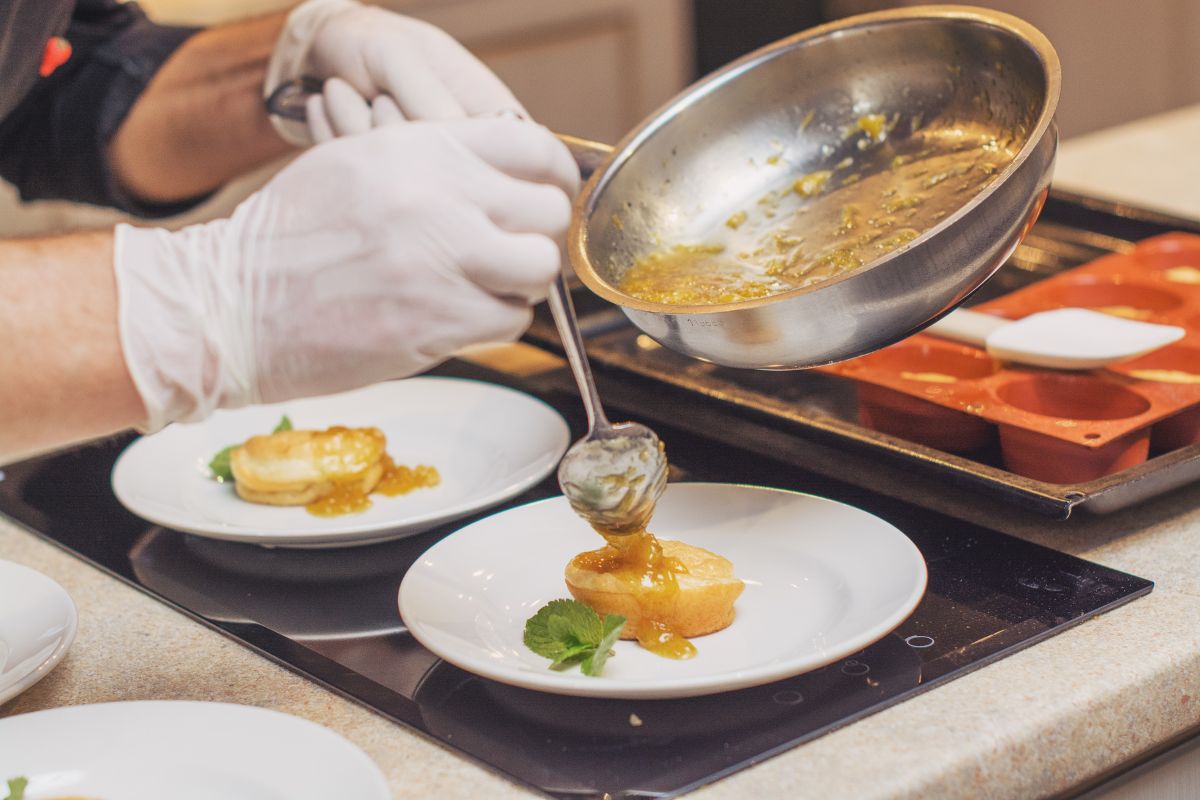How Culinary Arts Are Turning Meals into Immersive Experiences?

Strong 8k brings an ultra-HD IPTV experience to your living room and your pocket.
All of us watch films or now, web series, don’t we? Ever wondered why we binge-watch web series? Because we’re so engrossed in the world created by it that we can’t keep it out of our psyche until knowing the end. We unknowingly become a part of it & imagine ourselves in the story. How will the story unfold further, what will the conclusion be, is there any other plot twist, (if it’s a murder mystery) who will be the killer at the end (as everyone is involved in the murder in some way or the other) are some questions or curiosities that are undying inside us until we reach to the conclusive episode. The same is happening with our dining experiences. Culinary arts are becoming so immersive & authentic that we want to experience it to the core, like web shows.
The Chef’s Canvas of Multi-Cultural Storytelling:
In culinary arts, chefs are very well aware of the food being judged by sight. The role played by plating is crucial then immediately comes the aroma & flavors exuded. The field is a playground for all the senses. The art of plating opens up all the senses from vision, to smell, and hits the right emotions, whether nostalgia or a happy mood. After all, food is more than an emotion. Gastronomy involves a deep study of these aspects that has created the hype for dining a lot lately. Let’s dive deep into the chef’s perspective as they cook delicious & heavenly stories:
Present flavors as cultural & personal narratives: In the culinary arts, chefs often use ingredients & spices that reflect the heritage, experiences, & cultures of diverse countries. Fusion cuisine showcases personal journeys by blending flavors from different cultures. Signature dishes often carry sentimental value like a childhood core memory or a tribute to a coach or mentor from whom a chef has imbibed the skill.
Seasonal ingredients exude stories:Local ingredients are unheard of or lesser known to common people. For those in the culinary arts industry, using locally sourced ingredients highlights regional identity & sustainability. When customers experience these ingredients & interact with their history, they feel a connection & realize the history of the ingredients is so rich.
Emotional connection through food: Comfort foods invoke nostalgia, while bold flavors challenge and excite palates. Personal anecdotes in menu descriptions build a deeper connection between the chef and diners. Interactive dishes (e.g., tableside preparations) engage guests and make them a part of the story. These preparations initiate deep interactions between the chef and the consumers. These conversations foster a strong connection, making consumers feel more engaged in the overall experience and encouraging frequent visits.
Sustainability and Ethical Storytelling: By highlighting ethical sourcing, zero-waste cooking, or plant-based innovation, chefs tell a story of responsibility and care for the planet. Transparent ingredient sourcing (e.g., farm-to-table partnerships) allows guests to connect with the journey behind each dish. Culinary arts don’t only mean luxury dining experiences at the cost of the environment or nature. Some sustainability aspects like using eco-friendly packaging materials, disposing of waste responsibly after cooking, avoiding water wastage during cooking, etc are some crucial aspects too.
Fusion experiences: Fusion gastronomy helps customers be near diverse cultures, countries, & cuisines never heard of before. They take customers on a multi-cultural expedition through their culinary arts skills which are beyond taste, aroma, texture, & even sound for that matter. Sizzling dishes and crackling garnishing enhance the dish’s narrative.
Why Interactive Plating was Adopted?
In the culinary arts industry, acceptance from the customer is the core concern. Culinary creativity is a well-appreciated aspect as diners perceive & scrutinize these experiences in plated dishes. In the culinary sector, Horng & Lin took the plunge to devise a tool to rate culinary creativity based on Consensual Assessment Technique (CAT). The collective judgment of recognized experts is simply an ideal measure available in the creative stream be it in the form of culinary arts, poems, collage, etc. Here's a list of some more points:
Elevating the Dining Experience: Interactive plating was adopted to transform dining from a passive act into an engaging experience. When diners participate in the final presentation of their meal—whether by pouring a sauce, assembling ingredients, or cracking open an edible shell—it heightens their connection with the dish. This approach in culinary arts makes dining more memorable, turning it into a form of entertainment rather than just sustenance.
Engaging Multiple Senses: Traditional plating appeals primarily to sight and taste, but interactive plating engages multiple senses, including touch and sound. The act of stirring, breaking, or mixing elements at the table adds a tactile component, while sizzling platters or aromatic smoke enhances the auditory and olfactory experience. This multi-sensory engagement creates a deeper appreciation of the dish and the chef’s culinary arts vision.
Encouraging Customization: Modern diners seek more control over their meals, and interactive plating allows for personalization. From build-your-own tacos to customizable dessert presentations, guests can adjust flavors, textures, or ingredient combinations to suit their preferences. This level of involvement fosters a sense of ownership, making the meal feel more tailored and special.
Strengthening the Connections Overall: Interactive plating often draws inspiration from cultural dining traditions where meals are communal and participatory. For example, hot pots, Korean BBQs, and Japanese omakase encourage guests to engage with their food in a way that reflects heritage and social bonding. By incorporating interactive elements, chefs can bridge the gap between fine dining and traditional communal experiences enhancing culinary arts as a field.
Reinventing Gastronomy: Many high-end restaurants have embraced interactive plating to differentiate themselves from conventional fine dining. By introducing tableside service, deconstructed dishes, or molecular gastronomy techniques, chefs push the boundaries of culinary art. This evolution aligns with the growing demand for innovative, immersive, and theatrical dining experiences that challenge traditional norms.
Conclusion
As humans, we are attached to particular fragrances which evoke innumerable memories & emotions. Those maybe good or bad (we hope all good ones) depending on the experiences one has had. Food-evoked nostalgia is a proven aspect that helps to build a relationship with the cuisine or dish. The hospitality you receive may also emote some attachment-like feeling & you start visiting frequently. This is the power of connection & hitting the right emotion.
Uncover the latest trends and insights with our articles on Visionary Vogues
Note: IndiBlogHub features both user-submitted and editorial content. We do not verify third-party contributions. Read our Disclaimer and Privacy Policyfor details.







